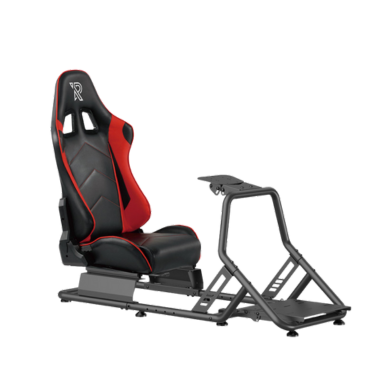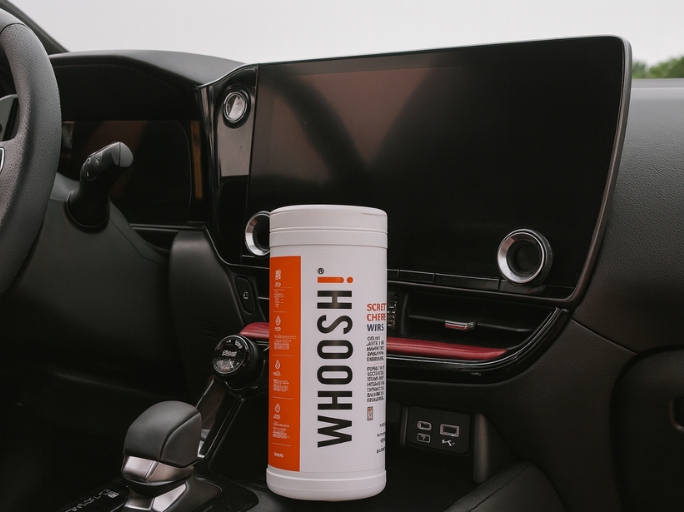Want to know how to run faster this summer to impress your friends? Whether you're an experienced runner or a novice, there are several strategies to help you progress quickly and safely. Find out what we suggest to make your running experience more enjoyable and productive!
Which muscles in the lower body should be strengthened to improve running?
Running, as you are surely aware, is a highly comprehensive sport. While it allows you to employ a wide range of muscles, training on them beforehand assists you to increase your performance.
-
Working your quadriceps in preparation for running
In the front of the thigh, these powerful muscles can be found. They raise the thigh, stretch the knee and regularly support the body weight. The stronger your quadriceps are, the easier it will be to run frequently without pain and to improve your performance quickly. Squats are the best way to develop your quadriceps! Start with three sets of five squats and gradually increase the number of sets as you train. Weighted squats are a great way to give your quadriceps more work.
You can supplement this with electro-stimulation sessions, which are most effective when combined with regular strength training activities.
-
Work on your calf muscles
The calves are the muscles that allow you to push upwards and forwards while also supporting your body weight.
Perform ankle flexions to strengthen them. To accomplish this, rapidly stand on your toes and then gently drop yourself down.
Begin by doing three sets of five. You may also use weights to make the exercise more tough.
Alternate between straight and bent knees for these exercises.
-
Stretching the hamstrings
The hamstrings are placed behind the thigh. They allow you to send your leg backwards and actively assist in maintaining knee stability in conjunction with your quadriceps. Simply take a few heel-and-butt strides to work them. The goal here is to break down each action rather than to go rapidly. Begin with three 10-second sets and gradually increase as the exercise gets easier.
Strength training will increase your running performance by working your muscles.
Which upper body muscles should be targeted during strength training to increase running performance?
To increase running performance, you should not only train your leg muscles. The muscles of the upper body should also be considered and should not be neglected during exercise.
-
Exercise your abdominal muscles
Working your abdominal muscles is beneficial not just for running but also for your overall health. The abdominal muscles aid in excellent posture and a straight back. They assist you to retain stability while running and hence go forward more effectively.
Some methods for strengthening your abdominal muscles include:
- Sit-ups: begin by holding the plank posture for thirty seconds, then gradually increase the time
- Crunches: with your back to the floor, exhale and elevate your upper body.
- Exercise your pectoral muscles.
- These muscles at the front of the chest help you to thrust your arm forward. As a result, they aid to tone the action during running.
- Push-ups are an excellent workout for working the pectoral muscles! Begin with tiny sets to break down the movement, then gradually increase as you grow. If tiptoe push-ups are too tough for you, try them against a wall, gradually increasing the effort by moving your feet away from the wall your hands are resting on. Do raised push-ups with a box or step once the workout gets too easy. Then do push-ups on your knees, followed by toes. You will make faster progress this way. If you feel comfortable and want to progress, try deficit push-ups.
- The Bluetens Power ABS pack will also help you strengthen your abdominal muscles and relax them whenever you want.
-
Exercise your deltoids
- These are the shoulder muscles that allow you to lift your arm upwards, to the side, and backwards. As a result, they enable you to swing your arms efficiently when jogging.
- Use dumbbells to do upward, forward, and sideward movements to strengthen them.
- Begin with three sets of five moves and progressively increase. It is vital to break down each action to regulate it, like with any muscle training activity.
Why do strength training work the muscles?
Strength training is beneficial for many reasons, especially for running. It helps to improve your performance by gradually developing a lighter, smoother stride and using less energy. If you improve your performance, you will be able to run faster and for longer distances. On the other hand, traditional strength training exercises (squats, sit-ups, lunges, etc.) combined with electro-stimulation will also allow you to quickly increase your performance.
Consider electro-stimulation as a viable way of strengthening muscles. Many people have tried and liked the Compex wireless electrostimulator. Discover all their electro-stimulators here.
Common running injuries
Here are several examples, as well as tips on how to prevent them:
Sprains of the ankle
- All it takes is a split second of inattention or uneven ground for a twist to occur, resulting in a sprain.
- To reduce the likelihood of occurrence, it is essential to warm up thoroughly and strengthen the calf muscle that supports the ankle, particularly with exercises to move up and down on tiptoes and all activities targeted at strengthening stability in unipodal support, known as proprioception exercises.
- Get in the practice of jogging on diverse terrains to push your muscles and get them acclimated to adjusting to different impacts.
Muscle ripping or stretching
- This sort of injury frequently affects the thigh muscles (quadriceps or hamstrings). Warming up properly is critical not just to reduce hazards, but also to use these muscles outside of running training sessions.
Tendinopathy
- The achilles tendon is a connective tissue that runs from the calf muscles to the heel. When you run too much, you might inflame this tendon. To avoid it, you should follow a gradual exercise program and, of course, concentrate on strengthening your calves.
- To minimize injuries as much as possible, it is essential to warm up before a run and train the muscles utilized during the run.
- You may also mix your training with electro-stimulation exercises: TENS programs are frequently given to reduce pain and cure various diseases, such as tendinitis or sprains, in addition to speeding muscle building.
Need help with anything else? Feel free to contact us via our chat, phone, and e-mail. Visit our contact page for the complete information!














